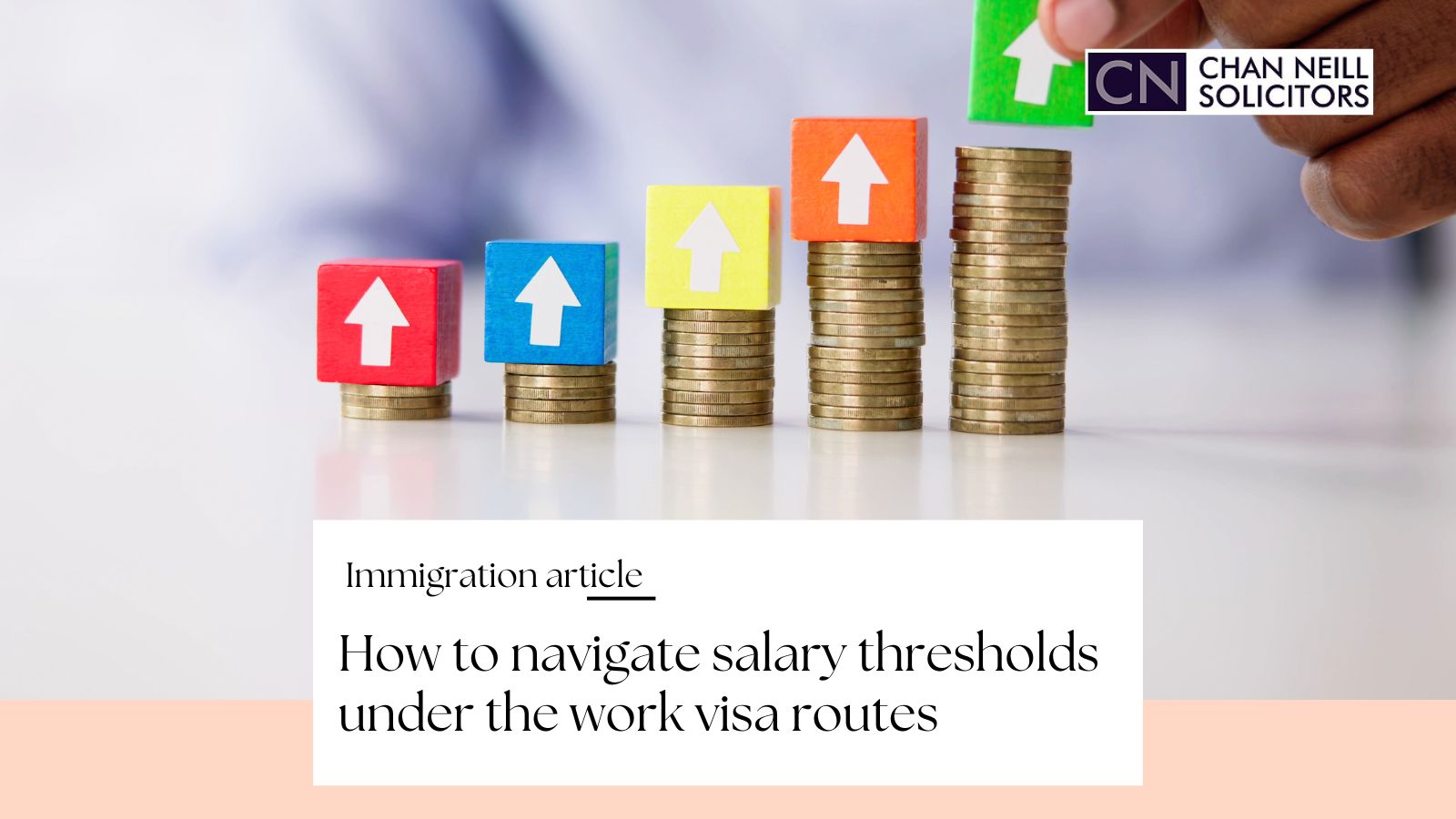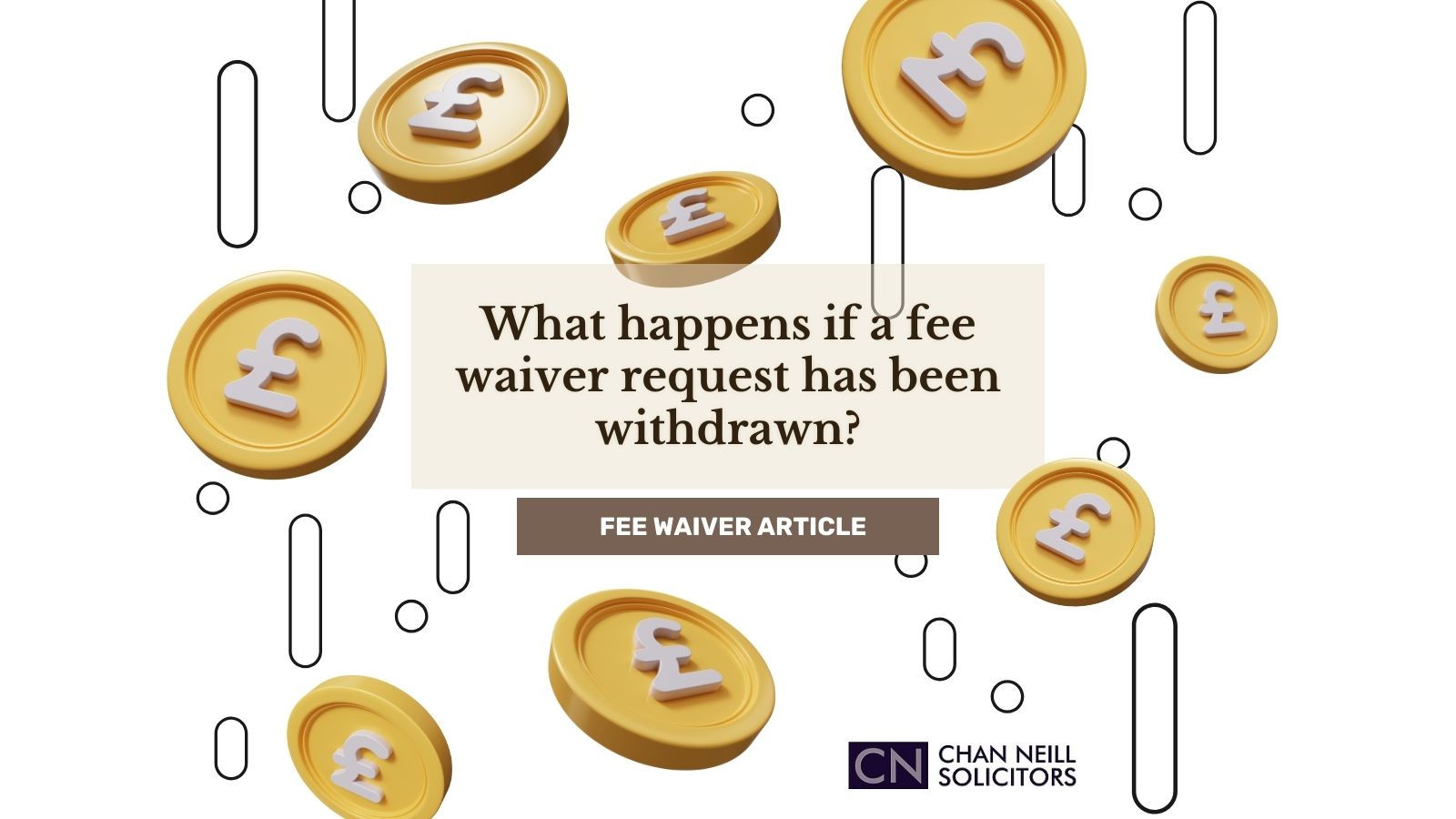How to navigate salary thresholds under the work visa routes

A new Statement of Changes to the Immigration Rules, laid before Parliament on the 14th of March 2024, introduced a sharp increase to the minimum salary thresholds for work routes, including Skilled Worker, Health and Care, Scale-Up and Senior or Specialist Worker routes. In addition, the Shortage Occupation List was replaced by a new Immigration Salary List, specifying the occupations where a reduced salary threshold applies in the Skilled Worker route and the Standard Occupation Classification (SOC) code system was updated from SOC 2010 to SOC 2020. The Home Office has also introduced transitional arrangements for existing work visa holders.
This has resulted in the expansion of the Appendix Skilled Occupations from three tables to six and in the version of the Rules which is difficult to follow. The Home Office operations guidance, which was updated on the 4th of April 2024, is not much of a help. Moreover, there are noticeable discrepancies in the Rules and guidance as well as operational issues since the implementation of the new Rules.
There is a hope that the Home Office will address the identified issues promptly. In the meantime, this post intends to shed light on how to navigate different salary levels when sponsoring migrant workers on the work routes.
Transitional provision
The starting point is to identify whether the prospective applicant falls within the transitional provision. The transitional provision applies when:
- The prospective applicant was granted permission as a Skilled Worker before the 4th of April 2024 and they have had continuous permission as a Skilled Worker since, and the date of application is before 4 April 2030; or
- The prospective applicant’s Certificate of Sponsorship (“COS”) was assigned before the 4th of April 2024 and they have had continuous permission as a Skilled Worker since, and the date of application is before 4 April 2030; or
- The job is eligible for the Health and Care ASHE visa (some conditions apply). More information can be found in paragraph SW A1.1. of Appendix Skilled Worker of Immigration Rules; or
- If being sponsored under Table 2a of Appendix Skilled Occupations, the prospective applicant was sponsored by the same sponsor in the most recent grant of permission and the sponsor continues to sponsor them.
If any of the transitional provisions apply, the minimum salary threshold will be assessed against the following options:
Option F: £29,000 per year, £11.90 per hour and the going rate for the SOC 2020 occupation code
Option G (PhD in a subject relevant to the job): £26,100 per year, £11.90 per hour and 90% of the going rate for the occupation code
Option H (PhD in a STEM subject relevant to the job): £23,200 per year, £11.90 per hour and 80% of the going rate for the occupation code
Option I (Job is in the Immigration Salary List): £23,200 per year, £11.90 per hour and the going rate for the occupation code
Option J (New entrant): £23,200 per year, £11.90 per hour and 70% of the going rate for the occupation code
Option K (Job listed in Health and Education Occupation): £23,200 per year and the going rate for the occupation code (Table 3 of Appendix Skilled Occupations)
The going rate for Options F to J can be found in Table 2 of Appendix Skilled Occupations.
New salary levels
If the job does not fall under any of the above-listed options, then, new salary thresholds apply:
Option A: £38,700 per year, £15.88 per hour and the going rate for the occupation code
Option B (PhD in a subject relevant to the job): £34,830 per year, £15.88 per hour and 90% of the going rate for the occupation code
Option C (PhD in a STEM subject relevant to the job): £30,960 per year, £15.88 per hour and 80% of the going rate for the occupation code
Option D (Job is in the Immigration Salary List): £30,960 per year, £15.88 per hour and the going rate for the occupation code
Option E (New entrant): £30,960 per year, £15.88 per hour and 70% of the going rate for the occupation code
The going rates for Options A to E can be found in Table 1 of Appendix Skilled Occupations.
Changes to Global Mobility and Scale-Up Routes
Alike the Skilled Worker salary thresholds, the salary thresholds for the Global Mobility Routes have gone up. The good news is that the going rates for the Global Mobility Routes will continue to be based on the 25th percentile of roles within the relevant SOC code and can be found in Tables 2 and 2b of Appendix Skilled Occupations. However, the minimum salary thresholds have gone up from £45,800 to £48,500 per annum for Senior or Specialist Workers and from £24,220 to £25,410 for Graduate Trainee applicants.
Important to note that some SOC Codes which were eligible for sponsorship under the Global Mobility Routes are no longer eligible as of the 4th of April 2024. Such codes are now listed in Table 2b of Appendix Skilled Occupations and can be used by someone with permission on this route before the 4th of April 2024 and who is applying for an extension to continue working in the same role.
For the Scale-Up route, the general threshold has been raised from £34,600 to £36,300.
What is next?
By introducing the above changes, as stated in the Explanatory Memorandum, the Home Office intends to encourage UK businesses to invest in the resident workforce rather than over-relying on migration. This has been the aim for many years but changing the immigration policy has not [yet] brought the desired results.
What is certain is that the Immigration Rules are becoming harder to navigate even for experienced immigration practitioners and, coupled with the increase in Immigration Health Surcharge and other visa costs, it could be assumed that this could have been done intentionally to discourage businesses from employing foreign workforce.
This article has been published in line with the relevant Rules and policies that apply on the 24th of April 2024.
This article is provided for general information only. It is not intended to be and cannot be relied upon as legal advice or otherwise. If you would like to discuss any of the matters covered in this article, please contact us using the contact form or email us on reception@cnsolicitors.com
What happens if a fee waiver request has been withdrawn?

What happens if a fee waiver request has been withdrawn?
The answer to this question does not appear to be straightforward.
As a brief background, a fee waiver allows eligible applicants to partially or fully avoid the payment of the Immigration Health Surcharge and/or application fees. The fee waiver option was originally available to in-country applications only. In 2022, the Home Office changed the Rules to allow overseas applicants to apply but only in limited circumstances.
To become eligible, an applicant must demonstrate upon legitimate evidence that they cannot afford the visa application and/or Immigration Health Surcharge fees for a reason of being destitute or at risk of becoming destitute, or, the total income earned is not enough to meet the child’s additional needs. If granted, the actual visa application must be made within 10 working days from the date of the decision on the fee waiver request when applying within the UK or 28 calendar days when applying from outside the UK followed by the submission of biometric data. Important to note that only certain application types are eligible for a fee waiver and applications for Indefinite Leave to Remain in the UK (also known as settlement), even those based on human rights claims, are not eligible for a fee waiver.
The processing times for a fee waiver request have recently been subject to increase, making many wonder what happens if a paid visa application has been submitted whilst a fee waiver request remains pending. This all comes down to section 3(c) of the Immigration Act 1971, or as commonly known “section 3(c)”.
To put it simply, section 3(c) extends one’s permission to remain in the UK lawfully whilst their in-time UK visa application remains pending decision at the Home Office or until all appeal rights associated with an in-time refused visa application are exhausted. In relation to a fee waiver request, without going into many technicalities, if the request has been made before the expiry date of a valid UK visa, the applicant’s rights to remain in the UK lawfully continue at the time when the decision on a fee waiver application has been made and at the time when an actual visa application has been submitted, even if the visa validity already came to an end. But what happens if a fee waiver request has been withdrawn or a paid visa application is made whilst the visa has already expired but a fee waiver request is yet to be decided?
The simple answer is that section 3(c) will not be triggered which means that the person will be an overstayer once their UK visa comes to an end. This is because a fee waiver is not an application for leave to remain in the UK – it is merely a request for the UKVI fees to be waived.
Case study
On 5 November 2023, Tom submitted a request asking the Home Office to waive the payment of the Immigration Health Charge and UKVI fees in relation to his UK Spouse extension application. Tom’s permission to remain in the UK expired on 1 January 2024 and his leave was transitioned to section 3(c).
Tom then realised that on 7 February 2024, he accumulated 10 years in the UK. Tom decided to not wait for the outcome of his fee waiver request and on 11 February 2024 he submitted a paid Indefinite Leave to Remain visa application under the 10-year Long Residence route using an expedited service.
On 11 March 2024, Tom’s application was refused. The reason is that to be eligible for Indefinite Leave to Remain under the 10-year Long Residence, Tom had to demonstrate that he was lawfully present in the UK for a consecutive 10-year period. Unfortunately, making a paid visa application, Tom’s fee waiver request became void, making him an overstayer since 2 January 2024, and therefore, short of lawful 10 years of residence.
The wording in some of the Home Office operation policies might suggest that a fee waiver request submitted in time is treated as an application for leave to remain, however, since the fee waiver is not an application for leave, it cannot be varied.
In the wake of the incredibly high visa fees and legal costs, it is more important than ever to correctly interpret the Immigration Law and requirements to avoid any disappointment and unnecessary expenses. Our Immigration team can assist with very complex immigration matters including fee waiver requests. Contact us for a quick assessment.
